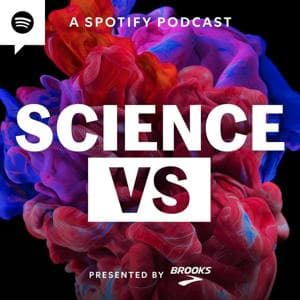Dr. Samantha Yaussy of James Madison University joins the show to discuss her research on the how sex, socioeconomic status, and developmental stress and the intersectionality therein might interact to affect health outcomes in the past via the lens of frailty in skeletal remains primarily from medieval London.
In this episode, we talked about the skeletal markers of frailty in human remains, understanding bias in research and samples, and intersectionality. As part of this, Dr. Yaussy highlighted the morbidity-mortality paradox -- women in modern contexts typically have worse health but longer lifespans than men. However, this doesn't seem to hold true in the populations she studies, which means the past may hold clues for improving health today.
------
Note: I feel pretty bad about dunking on The Pumpkin Spice Cafe. It was fine for what it was. I normally love "junk food" books, but this one just didn't do it for me, and that's ok. If you liked it, more power to you!
Books, articles, and media mentioned in this episode + helpful sites and articles:
- Dr. Yaussy's personal website
- Dr. Yaussy's staff page at James Madison University
- Yaussy SL, DeWitte SN. Patterns of frailty in non-adults from medieval London. Int J Paleopathol. 2018 Sep;22:1-7. doi: 10.1016/j.ijpp.2018.03.008. Epub 2018 Apr 4. PMID: 29626661.
- Yaussy SL, Marklein KE, DeWitte SN, Crews DE. Frailty or resilience? Hazard-based and cumulative phenotype approaches to discerning signals of health inequality in medieval London. Sci Adv. 2024 Nov 15;10(46):eadq5703. doi: 10.1126/sciadv.adq5703. Epub 2024 Nov 13. PMID: 39536101; PMCID: PMC11559611.
- Kulminski AM, Culminskaya IV, Ukraintseva SV, Arbeev KG, Land KC, Yashin AI. Sex-specific health deterioration and mortality: the morbidity-mortality paradox over age and time. Exp Gerontol. 2008 Dec;43(12):1052-7. doi: 10.1016/j.exger.2008.09.007. Epub 2008 Sep 20. PMID: 18835429; PMCID: PMC2703431.
- Yaussy SL. The intersections of industrialization: Variation in skeletal indicators of frailty by age, sex, and socioeconomic status in 18th- and 19th-century England. Am J Phys Anthropol. 2019; 170: 116-130. https://doi.org/10.1002/ajpa.23881
- Yaussy SL. The intersectional effects of sex and socioeconomic status on risk of mortality in industrializing England. Am J Biol Anthropol. 2024 Nov;185(3):e25022. doi: 10.1002/ajpa.25022. Epub 2024 Sep 8. PMID: 39245867.
- DeWitte SN, Yaussy SL. Sex differences in adult famine mortality in medieval London. Am J Phys Anthropol. 2020 Jan;171(1):164-169. doi: 10.1002/ajpa.23930. Epub 2019 Oct 6. PMID: 31587269.
- Biehler-Gomez L, Yaussy S, Moro C, Morandini P, Mondellini M, Petrosino D, Mattia M, Del Bo B, Cattaneo C. Unveiling the female experience through adult mortality and survivorship in Milan over the last 2000 years. Sci Rep. 2024 Sep 12;14(1):21328. doi: 10.1038/s41598-024-71607-9. Erratum in: Sci Rep. 2024 Nov 11;14(1):27553. doi: 10.1038/s41598-024-78532-x. PMID: 39266601; PMCID: PMC11393343.
- Yaussy, Samantha. (2022). Intersectionality and the Interpretation of Past Pandemics. Bioarchaeology International. 10.5744/bi.2020.0028.
- Wood, J. W., Milner, G. R., Harpending, H. C., Weiss, K. M., Cohen, M. N., Eisenberg, L. E., ... & Wilkinson, R. G. (1992). The osteological paradox: problems of inferring prehistoric health from skeletal samples [and comments and reply]. Current anthropology, 33(4), 343-370.
- Martin, D.L., Harrod, R.P, & Perez, V.R. (Eds.) (2013). Bioarchaeology: An Integrated Approach to Working with Human Remains. Springer.
- Agarwal, S.C. & Glencross, B.A. (Eds.) (2011). Social Bioarchaeology. Wiley-Blackwell.
- Buikstra, J.E. (Ed.) (2019). Ortner's Identification of Pathological Conditions in Human Skeletal Remains. Academic Press.
- Grauer, A.L. (Ed.) (2015). A Companion to Paleopathology. Wiley-Blackwell.
- Gowland RL. Entangled lives: Implications of the developmental origins of health and disease hypothesis for bioarchaeology and the life course. Am J Phys Anthropol. 2015 Dec;158(4):530-40. doi: 10.1002/ajpa.22820. Epub 2015 Aug 26. PMID: 26767348.
- Temple DH. Bioarchaeological evidence for adaptive plasticity and constraint: Exploring life-history trade-offs in the human past. Evol Anthropol. 2019; 28: 34–46. https://doi.org/10.1002/evan.21754
- DeWitte SN, and Yaussy SL. 2020. Bioarchaeological applications of intersectionality. In Cheverko C, Prince-Buitenhuys J, and Hubbe M (Eds) Theoretical Approaches in Bioarchaeology. Abingdon, UK: Routledge. p. 45-58.
- Ritchie, S. (2021). Science Fictions: How Frauds, Bias, Negligence, and Hype Undermine the Search for Truth. St Martins Press-3PL.
- Godde K, Pasillas V, Sanchez A. Survival analysis of the Black Death: Social inequality of women and the perils of life and death in Medieval London. Am J Phys Anthropol. 2020 Sep;173(1):168-178. doi: 10.1002/ajpa.24081. Epub 2020 May 29. PMID: 32472637.
- McCool WC, Anderson AS, Kennett DJ. Using a multimethod life history approach to navigate the osteological paradox: A case study from Prehispanic Nasca, Peru. Am J Phys Anthropol. 2021; 175: 816–833. https://doi.org/10.1002/ajpa.24279
- Shannon, S. (2019). The Priory of the Orange Tree. Bloomsbury Publishing.
- Adeyemi, T. (2018). Children of Blood and Bone. Henry Holt & Company.
- Gilmore, L. (2023). The Pumpkin Spice Cafe. HarperCollins.
- Clancy, K. (2023). Period: The Real Story of Menstruation. Princeton University Press.




































